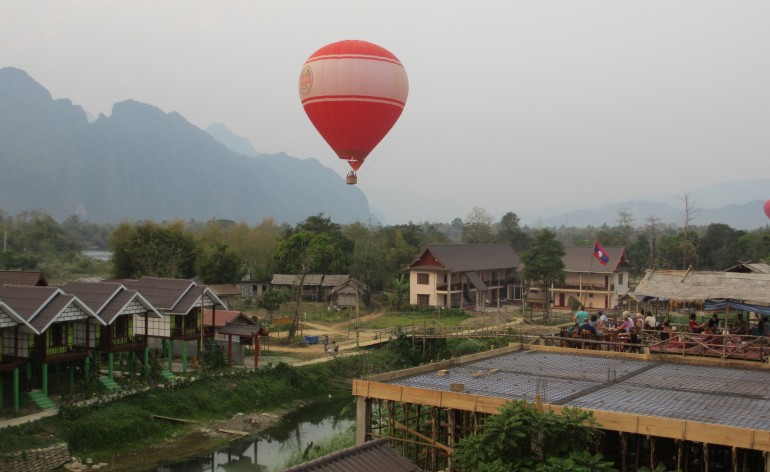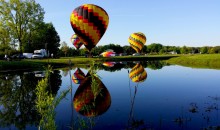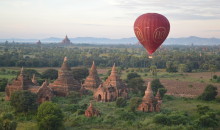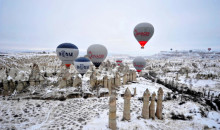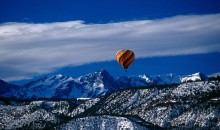Sweet calm again in Vang Vieng
The serenity is welcome but unexpected. Rambling along the edge of the Nam Song River which pierces Vang Vieng, the only noise I hear emanates from locals engaged in village life.
Fishermen chat and chuckle as they busily empty their catch from a vibrantly coloured wooden boat. Excitable children scream in pleasure as they chase each other through the shallow waters.
A group of middle-aged women convene under a tilted palm tree to sort the flowers they have picked in nearby fields.
The jungle-draped karst mountains which flank Vang Vieng reflect on the river’s surface in the fading evening light.
It is an idyllic setting tailor- made for tourists drawn to Laos by its mellow atmosphere and tranquil countryside. Yet, not much more than a year ago, this same stretch of river was swarming with rowdy young tourists intent on leaving their mark on what was then the party capital of South-East Asia.
The small city was awash with illicit drugs, boisterous bars, intoxicated travellers and rumours of the latest backpacker to have drowned in the Nam Song while inebriated.
Over the space of a decade, Vang Vieng had become a haven for debauched tourists.
Drifting down the Nam Song in a giant tyre tube clutching a beer was a bucket-list entry for wandering youths from across the globe.
Makeshift bars dotted the river’s edge, plying the floating tourists with cheap and potent alcohol and any other mind-altering substance in which they were interested.
Poorly constructed slides and flying foxes slung them from the banks into the murky waters.
This concoction of risk-taking behaviour regularly proved lethal. In 2011 alone there were more than 20 reported deaths of tourists in the town, most of whom drowned while tubing.
The wildly hedonistic environment of Vang Vieng, midway between the muted capital Vientiane and the spiritual city of Luang Prabang, was jarringly incongruous with the reserved Lao culture.
Eventually, the government put an end to the party.
In August last year, Lao authorities began a successful crackdown that led to dozens of riverside bars closing and an increased focus on preventing the spread of illicit drugs.
It has been so effective that in my three days in the city not once did I encounter an intoxicated traveller or hear bass pounding from a raucous drinking hole.
Tourists have not abandoned Vang Vieng, they are just mostly of a different breed. Families and couples gather for dinner in riverside restaurants, gazing across the Nam Song at farmers returning from their day’s labour in rice paddy fields.
While enjoying a similarly relaxing experience, I chat to a group of English tourists in their mid-30s who, like myself, had been reticent to visit Vang Vieng.
Deterred by its reputation for ceaseless revelry, they had planned to stay just one night en route to Luang Prabang.
Charmed by the unanticipated tranquillity they discovered, the group has extended the trip to allow time to explore the magnificent landscape which encircles Vang Vieng. They, too, arrived by bus from Vientiane, which is about four hours away across coarse roads strewn with unforgiving potholes.
I wave to them the following morning as we spy each other heading in opposite directions on mountain bikes hired for about $7 a day from local shops. The further I pedal from the city centre the more luxuriant and beguiling the scenery becomes.
Rarely do I lose my breath, because of the frequent stops which are necessary to fully absorb this enchanting sensory input. When I pause to watch two elderly farmers tilling soil, they gesture for me to join them in the field.
Unperturbed by the prospect of muddying my already well-worn sneakers, I tread carefully along a ridge which separates rows of rice. The men look at me quizzically, seemingly struggling to understand why I am taking such caution.
“C’mon, C’mon” is my assumed translation of what they yell.
For the next five minutes they attempt to sculpt me into an apprentice rice farmer as they explain, instruct and cajole. It is, as it appeared from the roadside, hard yakka. The impromptu lesson attracts several spectators, who gain not insignificant amusement from my bumbling ways.
Safe in the knowledge I am not cut out for a career in agriculture, I bid my teachers farewell and continue my ride.
Physical activities such as cycling, hiking, rock climbing and cave exploration now occupy most visitors to Vang Vieng.
The mountains looming over the Nam Song are perfect for climbing and schools offer full-day climbing classes for as little as $25.
Some travellers prefer to burrow within the limestone ridges to examine the many sprawling caves they conceal.
It is possible to reach these caverns on your own from the city centre or to join a guided tour, many of which also include other pursuits such as cycling, hiking or climbing.
At the base of Tham Poukham, also known as the Golden Cave, you can clean your sweaty body in the turquoise waters of a popular swimming hole, the Blue Lagoon.
Tubing on the river also remains an option, although the closure of most of the riverside bars appears to have greatly reduced this once-thriving activity.
On my ride back to town, I finally spot foreigners floating down the Nam Song. They are hollering and bickering.
But there isn’t a tyre tube in sight. The commotion is prompted by a heated kayak race between the clearly competitive friends.
Touts offer half or full-day kayaking tours from as little as $8, the longer of which typically include a visit to nearby Patan village.
The vestiges of Vang Vieng’s backpacker gold rush are evident on its central streets. The choice of internet cafes, tour agencies and restaurants serving western food is endless. The abundant bars are mostly empty.
It is a conflicting situation for the many locals who rely on tourism but were no doubt taken aback by the disrespectful behaviour of the hordes of drunken revellers.
Vang Vieng no longer courts such visitors.
While it may never again receive the same phenomenal volume of tourists it did a few years ago, it is gradually regaining some of its Laotian soul. And that can only be a good thing.
FACT FILE
Vang Vieng is about 160km north of Vientiane. Access is by bus from Vientiane or Luang Prabang, both of which have international airports.
The best time to visit Vang Vieng is between October and March when the weather is milder and drier. From May to September it receives heavy rainfall and regular thunderstorms.
Tham Poukham, Tham None, Tham Nam and Tham Xang are the most popular caves within easy reach of Vang Vieng. They are best explored with the help of a local guide, who will charge a small fee for a few hours.
Motorbikes are available for hire from several agencies in the city centre. Inexperienced riders should be very cautious because of the uneven roads which lead into the countryside surrounding Vang Vieng.
via – The West Australian

